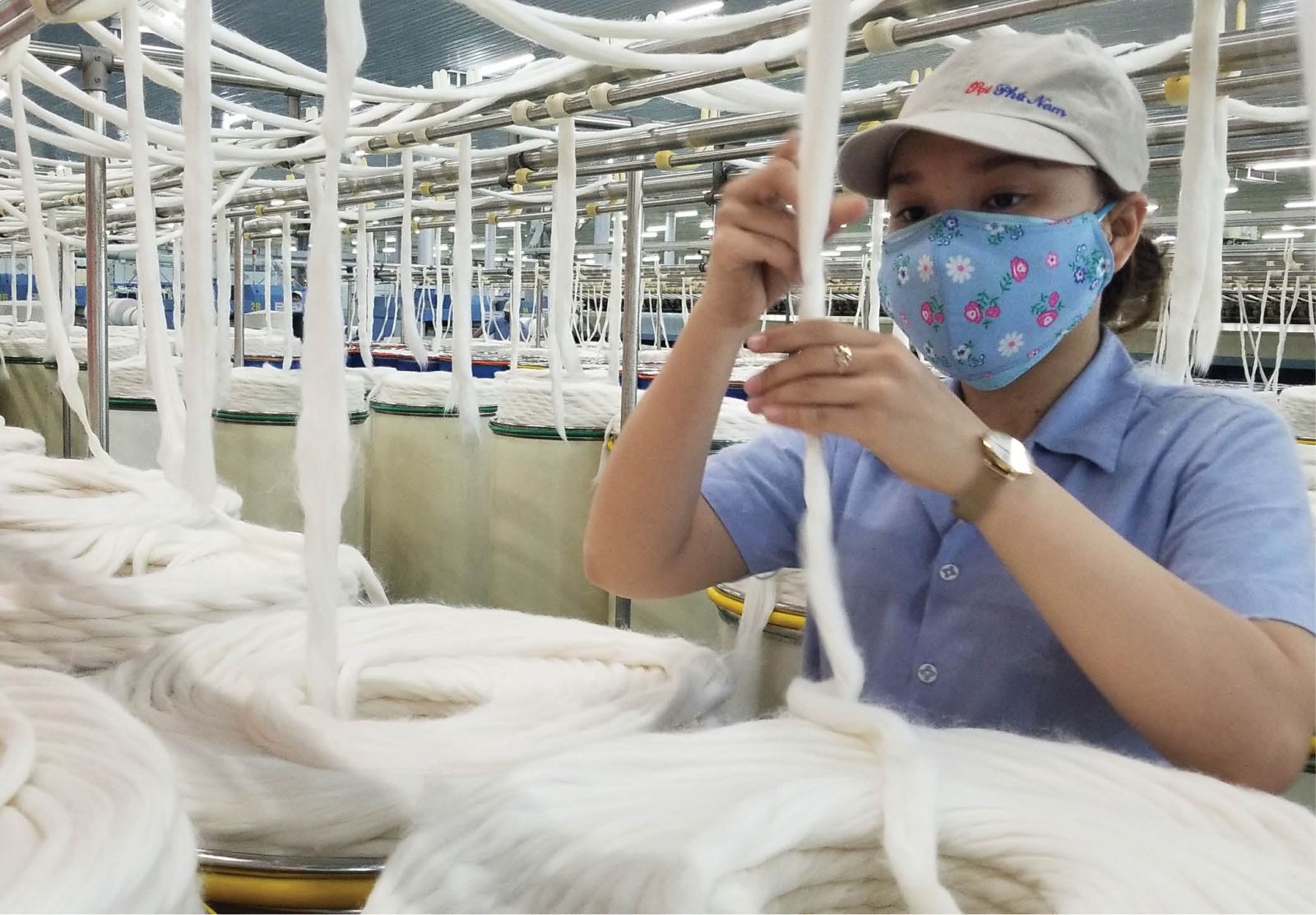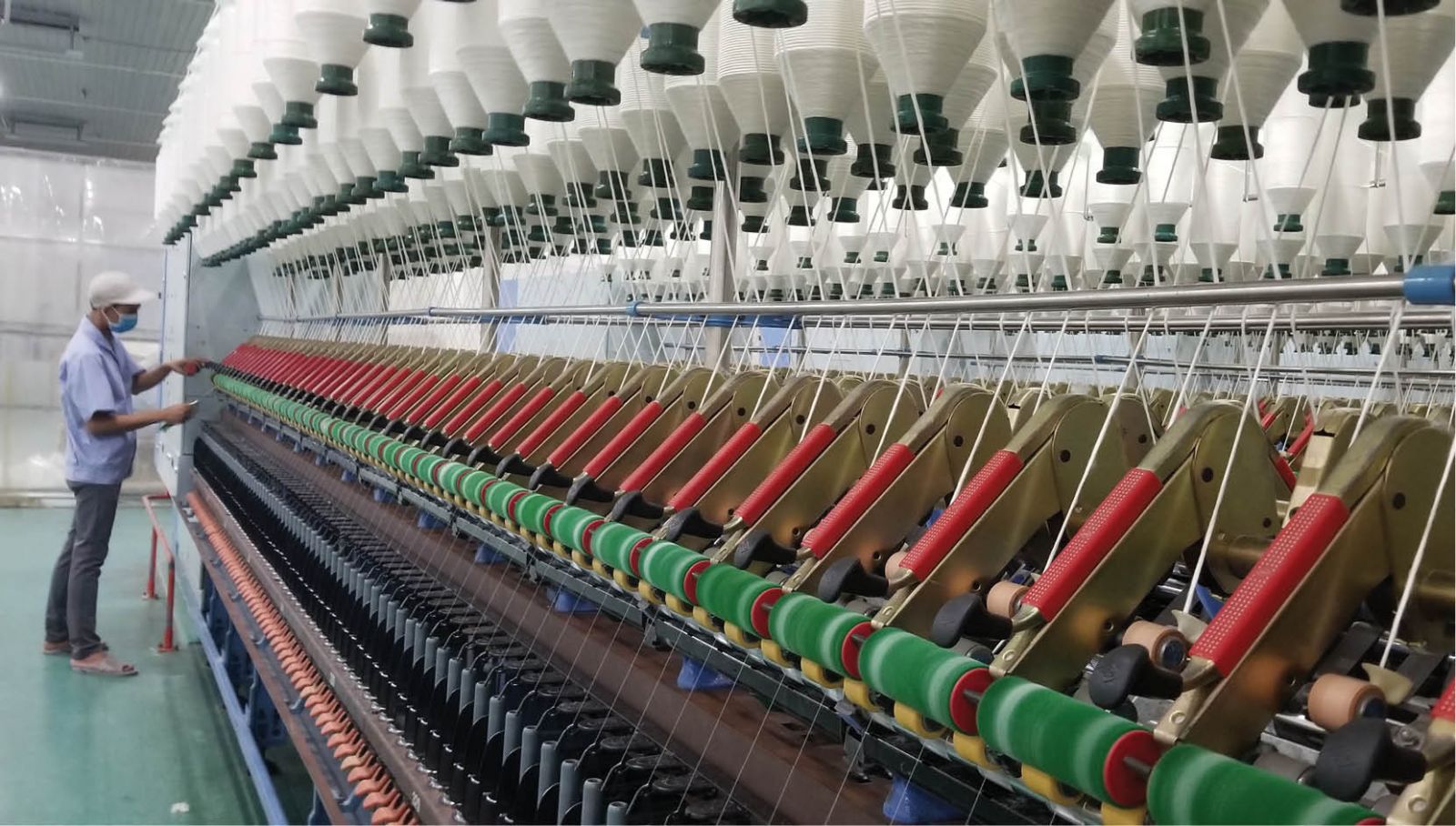
The Textile-garment and fiber industry would get preferential treatment when EVFTA takes effect
Opportunities for textile-garment, and wooden furniture
The textile-garment sector is considered one of the province’s major industries with more than 62 businesses in operation - 47 of them are manufacturing textile-garment products with a scale of 400 sewing lines, with about 500 million of garment and underwear products per year. In addition, 13/62 businesses are fiber companies with an operation scale of 460.000 spindles, which is equivalent to 100.000 tons of different kinds of fiber each year. And, there are two businesses that are responsible for the textile-garment supporting industry.
In 2009, while the textile-garment export turnover achieved $705 million accounting for 74% of the total provincial export turnover, the Seafood sector constituted $47 million, and wood and wooden furniture reached $102 million. However, the export turnovers of these sectors to EU nations were still modest, the main export products including CPV’s shrimps; Thua Thien Hue Wood Processing Joint Stock Company’s wooden tables and chairs; ready-made clothes and fiber products from Scavi Hue Company, Hue Textile Corporation, Hanesbrands Viet Nam Hue Company Limited, and Phu Bai Spinning Mill Joint Stock Company.
Ms. Nguyễn Hồng Liên, the Executive Director of Hue Textile Corporation, has stated that most of the company’s products are mainly exported to the American market, whereas just 10% of these are exported to Europe. However, once EVFTA is signed, the firm has already planned to expand partnerships in this market. Along with the advantages of tariff barriers being eliminated (as planned), combining with the fact that the company is owning producing fabric factories which meet the demands of the rules of origins for exporting product, and this would be a competitive advantage for the company in the coming time.
Ms. Lien also believes that EVFTA would play a significant role in raising the brand value of Vietnam in general and Thua Thien Hue’s products in particular in the European market. Moreover, this agreement creates not only chances but also pressure for the enterprise to carry out self-adjustments and changes in its business method and access to advanced technology, aiming to enhance its competitiveness.
European Union is one of five largest wooden product export markets of Vietnam. The signing of EVFTA would have several impacts on the development of local enterprises’ wooden product export sector
According to Mr. Le Duong Huy – the director of Thua Thien Hue Wood Processing Joint Stock Company, the EU is a stable market for exterior and interior wooden furniture with the export share accounting for 40%. This, EVFTA, is truly a wind of change for our enterprise to keep investing in technology, reform the assembly line, and train labor resources so that we could meet the demands to be the object of privilege policy.
In specific, the tax rate of 7% on goods like plywood and particle board is expecting to decrease to 0% in a period of 5 years; those of wooden sticks with tax rate at 3-4% and kitchen wooden furniture at 2% would be eliminated once this agreement comes into effect.

The textile-garment and fiber sectors could get preferential treatment when EVFTA takes effect.
Expanding the market
The signing of EVFTA helps exported goods of Vietnam including Thua Thien Hue’s products to expand their market. With the commitment of removing and reducing tariffs, the two sides both have reached the agreement that this would be the opportunity for increasing exporting goods which Vietnam has the edge, such as textile-garment, footwear, agro-forestry, fisheries and wooden products. Also, these are the main exported products of provincial enterprises.
EU market is one of these groups of products’ main export markets; therefore, EVFTA would give favorable conditions to enterprises, contributing to export turnover increase, market access, and also to accelerate the attraction of investment climate.
Ms. Nguyen Hong Lien said that the standards of EVFTA are related to different sectors; so, it is necessary for departments being responsible for these sectors to actively and positively step in, which would help enterprises swiftly meet the standards. Furthermore, the relevant government departments should support these firms in investing in the development of supply sources, especially fabric, for enterprises to expand the production scale which helps increase the export rate to the EU.
Besides these preferential tariff treatments, in the coming years, as foreign investors would relocate their factories into Vietnam to receive tax exemption, the textile-garment sector would have a wide range of difficulties in the process of developing supporting industries and the competitiveness in human resources. Moreover, this trend results in higher wage costs, affecting the profits of local enterprises.
Vice-Chairman of the Provincial People's Committee Phan Thien Dinh claimed that EVFTA is a comprehensive agreement, thus, for implementing this effectively, the coordination of both government departments and enterprises is pivotal. At present, the province has been actively planning in detail about carrying out EVFTA based on unique provincial export features, especially in the textiles and garments sectors.
It is expected that in the third quarter of the year 2020, the Provincial People's Committee would act in concert with the Agency of Foreign Trade and Ministry of Industry & Trade to organize promotion and dissemination activities about EVFTA for relevant provincial departments and enterprises. Particularly, there would be a detailed supporting plan for small and medium-sized enterprises in the provincial area when they take part in propaganda and promotion work about their exporting products to foreign markets, especially the EU.
Story and photos: Thanh Huong